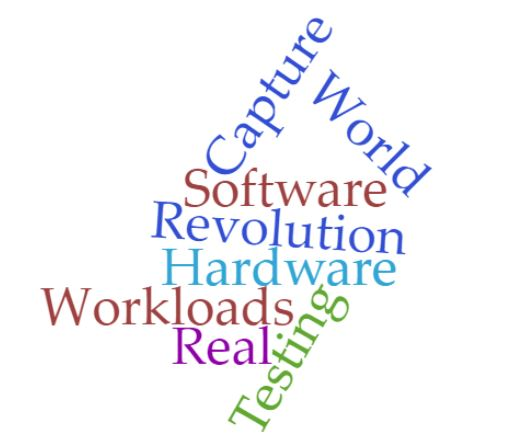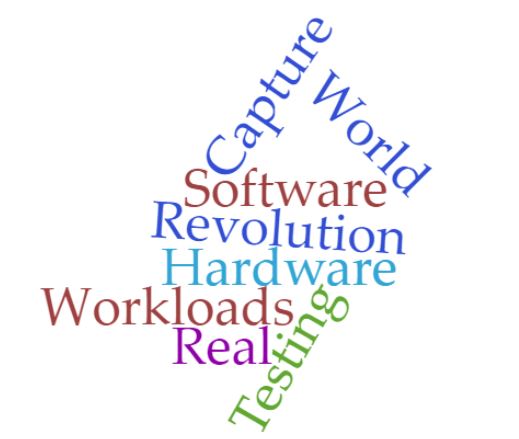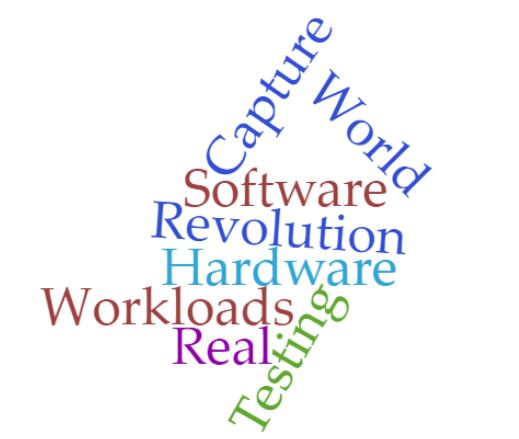 Last month, the SNIA Networking Storage Forum (NSF) hosted a webcast on how increases in networking speeds are impacting storage. If you missed the live webcast, New Landscape of Network Speeds, it’s now available on-demand. We received several interesting questions on this topic. Here are our experts’ answers:
Q. What are the cable distances for 2.5 and 5G Ethernet?
A. 2.5GBASE-T and 5GBASE-T Ethernet are designed to run on existing UTP cabling, so it should reach 100 meters on both Cat5e and Cat6 cabling. Reach of 5GBASE-T on Cat 5e may be less under some conditions, for example if many cables are bundled tightly together. Cabling guidelines and field test equipment are available to aid in the transition.
Q. Any comments on why U.2 drives are so rare/uncommon in desktop PC usage? M.2 are very common in laptops, and some desktops, but U.2’s large capacity seems a better fit for desktop.
A. M.2 SSDs are more popular for laptops and tablets due to their small form factor and sufficient capacity. U.2 SSDs are used more often in servers, though some desktops and larger laptops also use a U.2 SSD for the larger capacity.
Q. What about using Active Copper cables to get a bit more reach over Passive Copper cables before switching to Active Optical cables?
A. Yes active copper cables can provide longer reach than passive copper cables, but you have to look at the expense and power consumption. There may be many cases where using an active optical cable (AOC) will cost the same or less than an active copper cable.
Q. For 100Gb/s signaling (future standard) is it expected to work over copper cable (passive or active) or only optical?
A. Yes, though the maximum distances will be shorter. With 25Gb/s signaling the maximum copper cable length is 5m. With 50Gb/s signaling the longest copper cables are 3m long. With 100Gb/s we expect the longest copper cables will be about 2m long.
Q. So what do you see as the most prevalent LAN speed today and what do you see in next year or two?
A. For Ethernet, we see desktops mostly on 1Gb with some moving to 2.5G, 5Gb or 10Gb. Older servers are largely 10Gb but new servers are mostly using 25GbE or 50GbE, while the most demanding servers and fastest flash storage arrays have 100GbE connections. 200GbE will show up in a few servers starting in late 2019, but most 200GbE and 400GbE usage will be for switch-to-switch links during the next few years. In the world of Fibre Channel, most servers today are on 16G FC with a few running 32G and a few of the most demanding servers or fastest flash storage arrays using 64G. 128G FC for now will likely be just for switch-to-switch links. Finally for InfiniBand deployments, older servers are running FDR (56Gb/s) and newer servers are using EDR (100Gb/s). The very newest, fastest HPC and ML/AI servers are starting to use HDR (200Gb/s) InfiniBand.
If you’re new to SNIA NSF, we encourage you to check out the SNIA NSF webcast library. There you’ll find more than 60 educational, vendor-neutral on-demand webcasts produced by SNIA experts.
Last month, the SNIA Networking Storage Forum (NSF) hosted a webcast on how increases in networking speeds are impacting storage. If you missed the live webcast, New Landscape of Network Speeds, it’s now available on-demand. We received several interesting questions on this topic. Here are our experts’ answers:
Q. What are the cable distances for 2.5 and 5G Ethernet?
A. 2.5GBASE-T and 5GBASE-T Ethernet are designed to run on existing UTP cabling, so it should reach 100 meters on both Cat5e and Cat6 cabling. Reach of 5GBASE-T on Cat 5e may be less under some conditions, for example if many cables are bundled tightly together. Cabling guidelines and field test equipment are available to aid in the transition.
Q. Any comments on why U.2 drives are so rare/uncommon in desktop PC usage? M.2 are very common in laptops, and some desktops, but U.2’s large capacity seems a better fit for desktop.
A. M.2 SSDs are more popular for laptops and tablets due to their small form factor and sufficient capacity. U.2 SSDs are used more often in servers, though some desktops and larger laptops also use a U.2 SSD for the larger capacity.
Q. What about using Active Copper cables to get a bit more reach over Passive Copper cables before switching to Active Optical cables?
A. Yes active copper cables can provide longer reach than passive copper cables, but you have to look at the expense and power consumption. There may be many cases where using an active optical cable (AOC) will cost the same or less than an active copper cable.
Q. For 100Gb/s signaling (future standard) is it expected to work over copper cable (passive or active) or only optical?
A. Yes, though the maximum distances will be shorter. With 25Gb/s signaling the maximum copper cable length is 5m. With 50Gb/s signaling the longest copper cables are 3m long. With 100Gb/s we expect the longest copper cables will be about 2m long.
Q. So what do you see as the most prevalent LAN speed today and what do you see in next year or two?
A. For Ethernet, we see desktops mostly on 1Gb with some moving to 2.5G, 5Gb or 10Gb. Older servers are largely 10Gb but new servers are mostly using 25GbE or 50GbE, while the most demanding servers and fastest flash storage arrays have 100GbE connections. 200GbE will show up in a few servers starting in late 2019, but most 200GbE and 400GbE usage will be for switch-to-switch links during the next few years. In the world of Fibre Channel, most servers today are on 16G FC with a few running 32G and a few of the most demanding servers or fastest flash storage arrays using 64G. 128G FC for now will likely be just for switch-to-switch links. Finally for InfiniBand deployments, older servers are running FDR (56Gb/s) and newer servers are using EDR (100Gb/s). The very newest, fastest HPC and ML/AI servers are starting to use HDR (200Gb/s) InfiniBand.
If you’re new to SNIA NSF, we encourage you to check out the SNIA NSF webcast library. There you’ll find more than 60 educational, vendor-neutral on-demand webcasts produced by SNIA experts.
 Last month, the SNIA Networking Storage Forum (NSF) hosted a webcast on how increases in networking speeds are impacting storage. If you missed the live webcast, New Landscape of Network Speeds, it’s now available on-demand. We received several interesting questions on this topic. Here are our experts’ answers:
Q. What are the cable distances for 2.5 and 5G Ethernet?
A. 2.5GBASE-T and 5GBASE-T Ethernet are designed to run on existing UTP cabling, so it should reach 100 meters on both Cat5e and Cat6 cabling. Reach of 5GBASE-T on Cat 5e may be less under some conditions, for example if many cables are bundled tightly together. Cabling guidelines and field test equipment are available to aid in the transition.
Q. Any comments on why U.2 drives are so rare/uncommon in desktop PC usage? M.2 are very common in laptops, and some desktops, but U.2’s large capacity seems a better fit for desktop.
A. M.2 SSDs are more popular for laptops and tablets due to their small form factor and sufficient capacity. U.2 SSDs are used more often in servers, though some desktops and larger laptops also use a U.2 SSD for the larger capacity.
Q. What about using Active Copper cables to get a bit more reach over Passive Copper cables before switching to Active Optical cables?
A. Yes active copper cables can provide longer reach than passive copper cables, but you have to look at the expense and power consumption. There may be many cases where using an active optical cable (AOC) will cost the same or less than an active copper cable.
Q. For 100Gb/s signaling (future standard) is it expected to work over copper cable (passive or active) or only optical?
A. Yes, though the maximum distances will be shorter. With 25Gb/s signaling the maximum copper cable length is 5m. With 50Gb/s signaling the longest copper cables are 3m long. With 100Gb/s we expect the longest copper cables will be about 2m long.
Q. So what do you see as the most prevalent LAN speed today and what do you see in next year or two?
A. For Ethernet, we see desktops mostly on 1Gb with some moving to 2.5G, 5Gb or 10Gb. Older servers are largely 10Gb but new servers are mostly using 25GbE or 50GbE, while the most demanding servers and fastest flash storage arrays have 100GbE connections. 200GbE will show up in a few servers starting in late 2019, but most 200GbE and 400GbE usage will be for switch-to-switch links during the next few years. In the world of Fibre Channel, most servers today are on 16G FC with a few running 32G and a few of the most demanding servers or fastest flash storage arrays using 64G. 128G FC for now will likely be just for switch-to-switch links. Finally for InfiniBand deployments, older servers are running FDR (56Gb/s) and newer servers are using EDR (100Gb/s). The very newest, fastest HPC and ML/AI servers are starting to use HDR (200Gb/s) InfiniBand.
If you’re new to SNIA NSF, we encourage you to check out the SNIA NSF webcast library. There you’ll find more than 60 educational, vendor-neutral on-demand webcasts produced by SNIA experts.
Last month, the SNIA Networking Storage Forum (NSF) hosted a webcast on how increases in networking speeds are impacting storage. If you missed the live webcast, New Landscape of Network Speeds, it’s now available on-demand. We received several interesting questions on this topic. Here are our experts’ answers:
Q. What are the cable distances for 2.5 and 5G Ethernet?
A. 2.5GBASE-T and 5GBASE-T Ethernet are designed to run on existing UTP cabling, so it should reach 100 meters on both Cat5e and Cat6 cabling. Reach of 5GBASE-T on Cat 5e may be less under some conditions, for example if many cables are bundled tightly together. Cabling guidelines and field test equipment are available to aid in the transition.
Q. Any comments on why U.2 drives are so rare/uncommon in desktop PC usage? M.2 are very common in laptops, and some desktops, but U.2’s large capacity seems a better fit for desktop.
A. M.2 SSDs are more popular for laptops and tablets due to their small form factor and sufficient capacity. U.2 SSDs are used more often in servers, though some desktops and larger laptops also use a U.2 SSD for the larger capacity.
Q. What about using Active Copper cables to get a bit more reach over Passive Copper cables before switching to Active Optical cables?
A. Yes active copper cables can provide longer reach than passive copper cables, but you have to look at the expense and power consumption. There may be many cases where using an active optical cable (AOC) will cost the same or less than an active copper cable.
Q. For 100Gb/s signaling (future standard) is it expected to work over copper cable (passive or active) or only optical?
A. Yes, though the maximum distances will be shorter. With 25Gb/s signaling the maximum copper cable length is 5m. With 50Gb/s signaling the longest copper cables are 3m long. With 100Gb/s we expect the longest copper cables will be about 2m long.
Q. So what do you see as the most prevalent LAN speed today and what do you see in next year or two?
A. For Ethernet, we see desktops mostly on 1Gb with some moving to 2.5G, 5Gb or 10Gb. Older servers are largely 10Gb but new servers are mostly using 25GbE or 50GbE, while the most demanding servers and fastest flash storage arrays have 100GbE connections. 200GbE will show up in a few servers starting in late 2019, but most 200GbE and 400GbE usage will be for switch-to-switch links during the next few years. In the world of Fibre Channel, most servers today are on 16G FC with a few running 32G and a few of the most demanding servers or fastest flash storage arrays using 64G. 128G FC for now will likely be just for switch-to-switch links. Finally for InfiniBand deployments, older servers are running FDR (56Gb/s) and newer servers are using EDR (100Gb/s). The very newest, fastest HPC and ML/AI servers are starting to use HDR (200Gb/s) InfiniBand.
If you’re new to SNIA NSF, we encourage you to check out the SNIA NSF webcast library. There you’ll find more than 60 educational, vendor-neutral on-demand webcasts produced by SNIA experts.










 The
The 
 The
The 





Leave a Reply